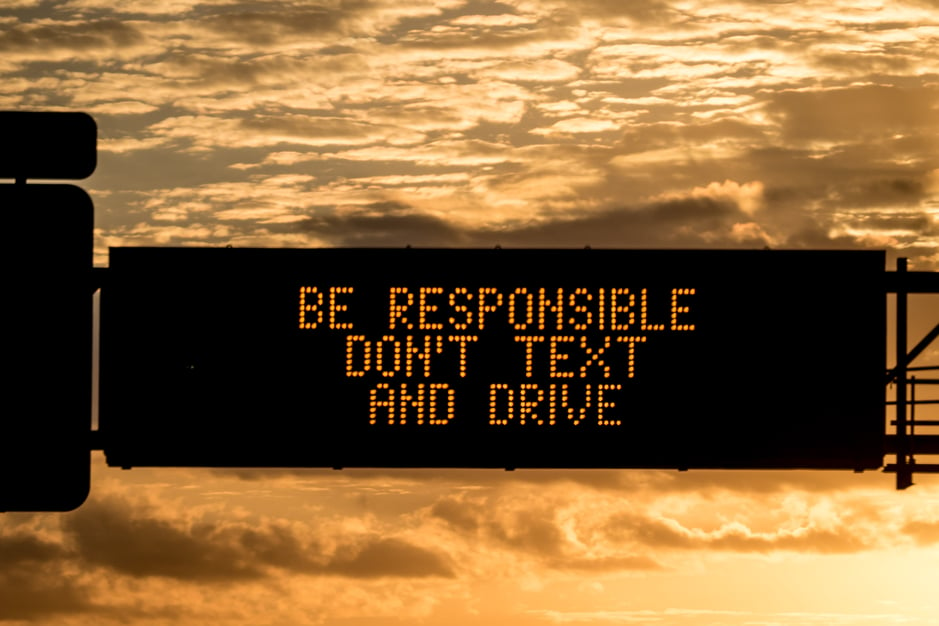April is Distracted Driving Awareness Month — these tips will help your P&C insurance clients stay safe behind the wheel
Getting behind the wheel may appear to be a routine affair, but it is most likely one the riskiest things people do all day.
According to the Centers for Disease Control (CDC), car crashes are a leading cause of death for US citizens ages 1-54, and chances may be considerably higher based on where your auto insurance clients live and what kind of car they drive.
April is Distracted Driving Awareness Month and estimates from the National Safety Council show that dangers while driving are growing, and on any given day, eight people are killed and hundreds more are injured in distraction-affected crashes.
While your P&C insurance customers can’t control how other people drive, they can certainly be mindful of their own behind-the-wheel behavior, and this is a great month to remind them. Here are some safe driving tips to pass along, whether through social media, a blog on your P&C agency’s website, or included in an automated email sent to your auto policyholders.
Stay Calm, Cool & Collected
When another motorist acts in a way that leaves you feeling insulted or angry, remember: it is not worth the time or energy to react. The best line of action is to remain calm and avoid conflict by avoiding eye contact, angry exchanges, or aggressive driving that puts you and other drivers at risk. If necessary to avoid a confrontation, call 911 on your smartphone or drive to the nearest police station.
Wear Your Seatbelt
Countless injuries can be avoided or mitigated in automobile accidents might be avoided if drivers wear their seatbelt. The CDC reports that seatbelts lower the chance of serious injury by as much as 50% in the event of a car accident, so make buckling up both a priority and a habit.
Wear Your Seatbelt
Countless injuries can be avoided or mitigated in automobile accidents might be avoided if drivers wear their seatbelt. The CDC reports that seatbelts lower the chance of serious injury by as much as 50% in the event of a car accident, so make buckling up both a priority and a habit.
Don't Multitask While Driving

Multitasking when driving is extremely dangerous since it diverts drivers' eyes off the road and prevents them from properly controlling their vehicles, not to mention their own response times. Eating, personal grooming, dealing with kids and pets, fiddling with the radio, rubbernecking at wrecks and other roadway events — all are forms of distraction that take your eyes and attention off driving. Your best bet? Concentrate solely on the road ahead when driving.
raction that take your eyes and attention off driving. Your best bet? Concentrate solely on the road ahead when driving.
Obey Speed Limits
Speed restrictions are set for safety, but are drivers paying attention? The National Highway Traffic a
Obey Speed Limits
Speed restrictions are set for safety, but are drivers paying attention? The National Highway Traffic and Safety Administration (NHTSA) released research findings from March 2020 through June 2021 that shows incidents of speeding and traveling without a seatbelt were higher than during before the Pandemic. Along with buckling up, remember to slow it down on the road.
Maintain Distance
As a rule of thumb, remember to maintain a reasonable distance from the vehicle in front of you at all times. What exactly is a reasonable distance? Adhere to the 3-second rule. Locate a fixed item on the roadside, such as a lamppost. Begin counting when the vehicle in front of you gets past the lamppost. At least three seconds should go by before they pass the same lamppost. If not, back off and leave enough room that you can safely come to a complete stop if the motorist in front of you abruptly applies the brakes.
Deal Safely with Tailgaters
If somebody is tailgating you, leave twice the space between their vehicle and the vehicle ahead. This improves your capacity to see and anticipate a collision. Then, slowly and gradually reduce your speed slightly slower than the speed of adjacent traffic, and change lanes when possible, so your tailgater will pass.
Use Blinkers
Confusion is a driver's worst enemy. Make lane turns and changes as smooth and predictable as possible, and always signal ahead of time, giving drivers around you a clear signal of your intentions and time to react.
Drive Cautiously Under Poor Weather Conditions
Driving in severe rain, fog, or snow raises the probability of a crash tenfold. Bad weather impacts not just visibility but also road conditions. You should be extra cautious when driving in poor weather. Drive at a slower speed than the posted limit and keep your distance from the automobile ahead of you. If visibility worsens, pull over in a spot to wait until the weather improves — just be sure your caution lights are on so other drivers can clearly see your vehicle.
Use Headlights Wisely
When visibility is reduced on curving roads, poor weather conditions, or low light, advise your clients to switch on your headlights to ensure they can be seen. High beams should only be used in low traffic and should be turned down for incoming motorists.
If you’re looking for additional resources to share with your p&c insurance clients during National Distracted Driving Awareness Month, The National Safety Council has plenty to offer — including social media shareables, a Just Drive Pledge you can sign and share, infographics, and much more.




